Can You Put A Filter On Fuji Xf Lenses
The best Fujifilm lenses in 2022: the best Fujinon zoom lenses & primes right now

The best Fujifilm lenses are the perfect pairing for your Fujifilm photographic camera, designed to complement your kit and help you become the best images possible. Choosing the all-time Fujifilm lenses for y'all volition come downward to what sort of photography or videography you lot shoot.
For those who capture intricately detailed portraits or ballsy landscapes, you might desire to accept a look at some of the high quality prime lenses Fujifilm produces. Alternatively, if you're a casual fan of travel or street photography, and so you'll honey the affordable Fujifilm zoom lenses instead.
The lenses in this guide are solely for Fujifilm 10-series cameras. If you're a GFX medium format user, then we'd recommend checking out our guide to the best Fujifilm GF lenses (opens in new tab) instead. However, you don't have to invest in medium format glass to go the most out of your Fujifilm optics. The newly added Fujinon XF 70-300mm f/4-5.6 R LM OIS WR (opens in new tab) telephoto zoom and the super-sharp, super-fast Fujinon XF18mm f/i.4 R LM WR (opens in new tab) both show simply how versatile and high quality the best Fujifilm lenses can exist.
One of the widely-spouted drawbacks of the best mirrorless cameras (opens in new tab) is that they don't accept the same epic annal of lenses for users to cull from. Yet, Fujifilm has been steadily increasing the amount of X-mount lenses available for almost a decade.
From zooms to primes, or wide angles to telephotos, in that location are plenty of exciting options for both photographers and videographers to explore. Nosotros've split up up our guide to the best Fujifilm lenses into lens types, including portrait lenses, macro lenses, wide angle lenses and more than. Coil downward below to explore…
The all-time Fujifilm lenses in 2022
Standard zooms
Many Fujifilm cameras really come with kit lens included, which is usually a standard zoom. All the same, while these lenses are perfectly serviceable, you might desire to upgrade to a slice of glass with a wider constant aperture or ameliorate optical quality. Accept a wait at our peak picks here.
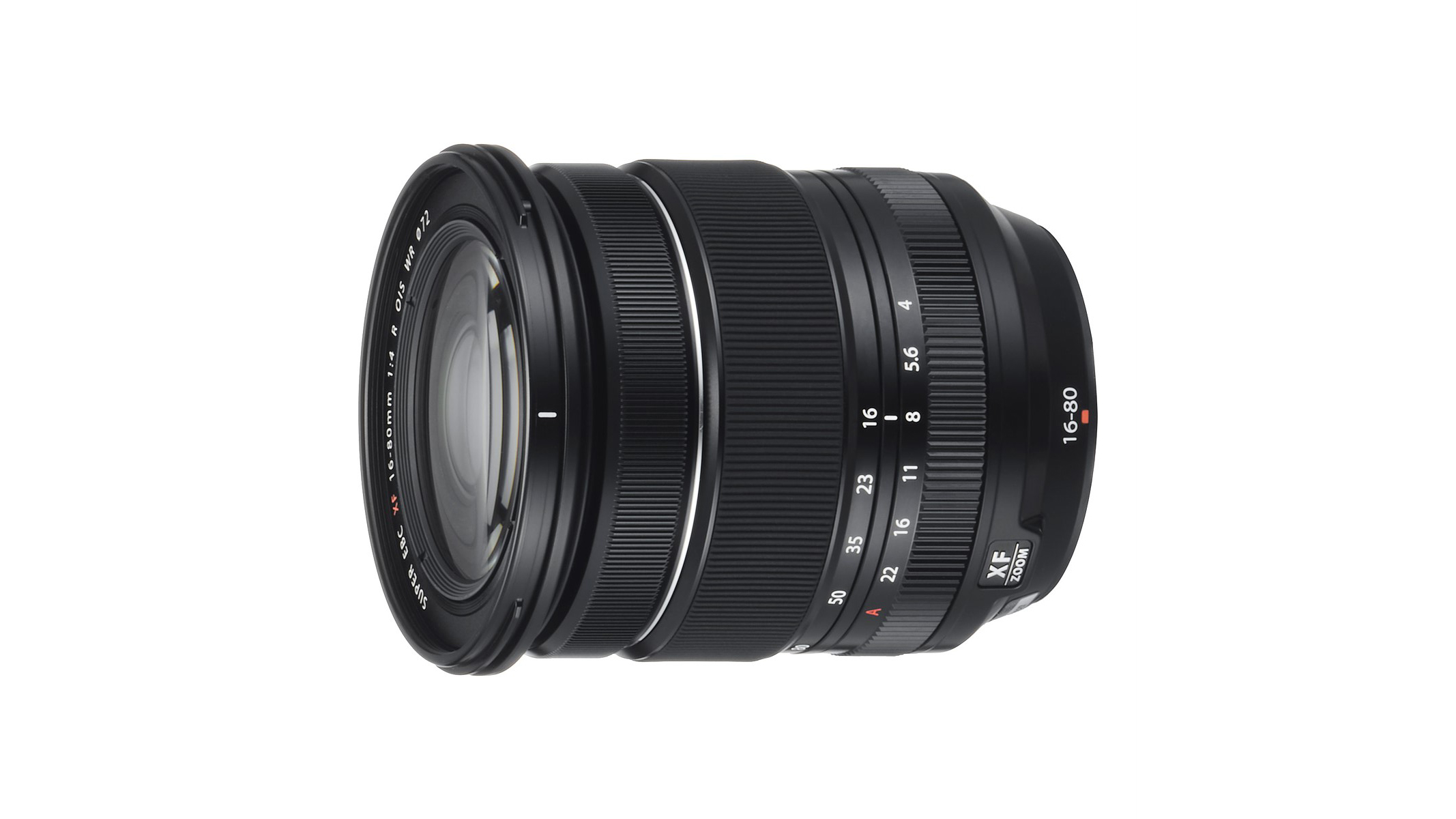
The Fujinon XF 16-80mmF4 R OIS WR is not the fastest 10-mount lens in the Fujinon line-up – that's the XF 16-55mm f2.viii R LM WR – but it's smaller, lighter, cheaper, has a 5x zoom range and optical stabilisation, and then losing i f-stop in maximum discontinuity seems a modest cost to pay. We constitute it a consistently good performer in outdoor shooting (not so much at close range in the lab), and its build quality and handling are equally skilful equally information technology gets... and ALL lenses should accept an aperture ring like this one! The XF 16-55mm f/ii.eight might await like the all-time 'pro' standard zoom, only we call up this is a much smaller, cheaper and more versatile all-rounder.
Read more than: Fujinon XF16-80mm F4 R OIS WR review (opens in new tab)


This top-drawer 'blood-red badge' lens is Fujifilm's answer to pro-grade 24-70mm f/2.8 lenses for total-frame DSLRs. The Fujifilm XF16-55mm f/2.8 R LM WR really beats them for zoom range, with an 'effective' 24-84mm focal length, and has a similarly robust, weather-resistant construction. Performance is fabulous in all respects, with super-fast and highly accurate autofocus enabled past a twin linear motor, plus a feast of glassware that includes three aspherical elements and three ED (Actress-depression Dispersion) elements. Sharpness and contrast are spectacular, bokeh is beautiful and there'south splendid resistance to ghosting and flare, thanks to dual conventional and nano-structure coatings. The only real minus points are that there'south no image stabilization, and the lens is relatively heavy for an X-mount standard zoom.

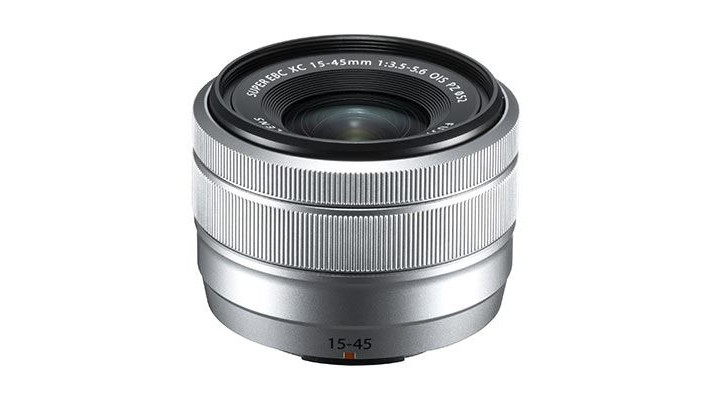
Typical of Fujifilm's 'Ninety' lenses, this one is very compact and lightweight. It features optical epitome stabilization simply adds a dual-speed 'power zoom' characteristic which is keen for movie capture. The 15mm minimum focal length makes this unusually 'wide' for a kit lens, which can exist really useful indoors and in narrow streets. Handling can be a little fiddly, every bit you might expect from a lens and then physically small, with no option for manual zoom. Lightness has clearly been the number-one priority throughout the lens's entire development, then it does terminate up feeling a fiddling plasticky compared to Fujifilm's other offerings. If this doesn't bother you, you'll find the Fujifilm XC15-45mm f/3.v-5.6 OIS PZ to exist a rewarding and enjoyable lens to utilize and optically very good – it's certainly the best Fujifilm standard zoom for travelling light.
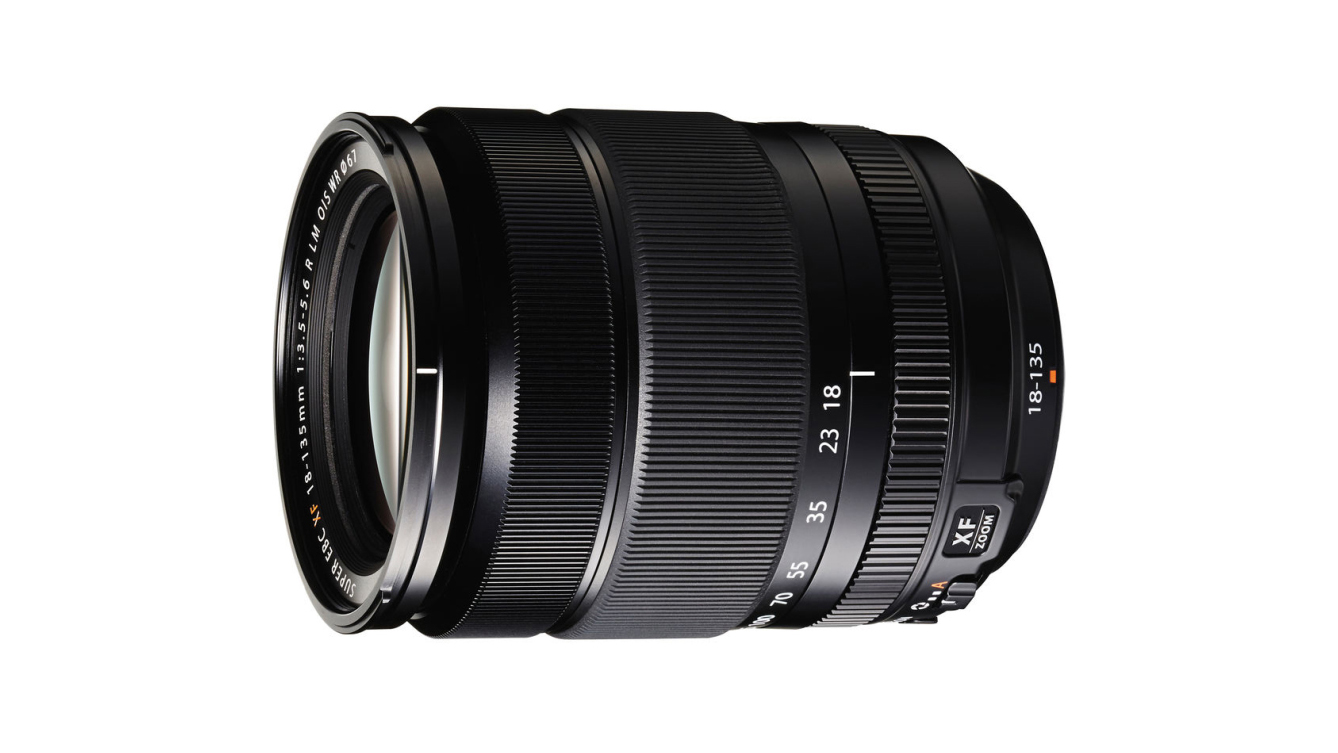
Even though well-nigh Fujifilm X-mountain lenses are comparatively compact and lightweight, information technology can still be a chore if you lot need to carry multiple lenses around with you lot. Platonic for travel and walkabout photography, this 'superzoom' XF18-135mm f/3.v-5.half dozen R LM OIS WR (opens in new tab) takes you lot all the fashion from wide-angle coverage to serious telephoto reach, equivalent to 27-206mm on a full-frame camera. Naturally, if you lot similar to travel calorie-free, you won't desire to be lugging a tripod around either, and so the 5-finish optical stabilizer is another bonus. Not just versatile in terms of zoom range, the lens is great for everything from landscape and architectural shots to action sports and wildlife, thank you to a very fast linear motor autofocus system. You lot needn't permit rain finish play either, as the lens has comprehensive atmospheric condition-seals applied to no fewer than 20 areas.
Telephoto zooms
Other than a standard zoom, a telephoto zoom can be one of the about useful pieces of glass that a lensman tin can buy – specially if they like shooting far-away subjects, such equally wildlife or sports. We've collated a few unlike options to consider here, including an affordable piece of drinking glass perfect for novices and some more powerful lenses for professional shooters.
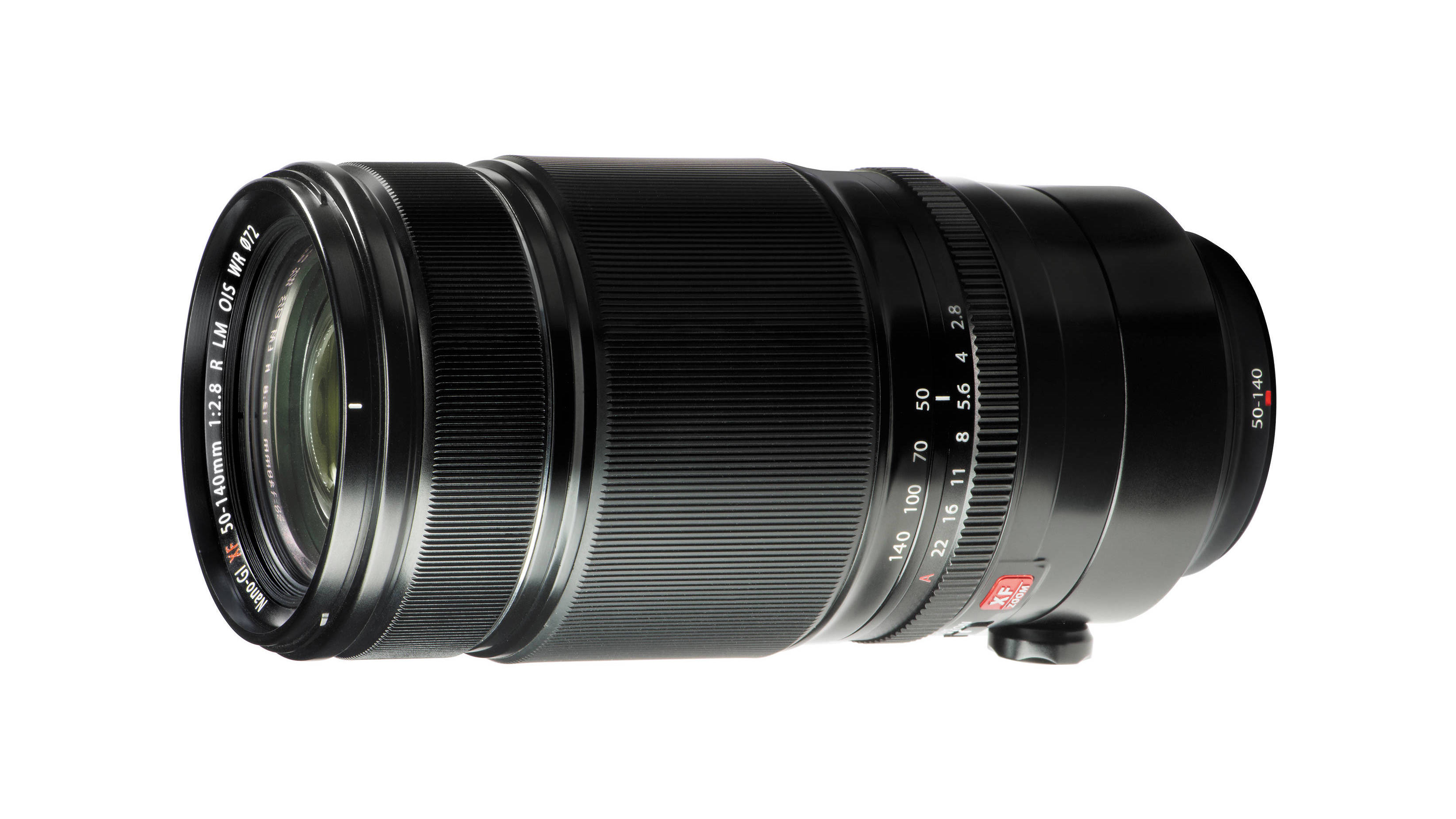
Most professional person and enthusiast photographers who utilise total-frame cameras (opens in new tab) catch a 70-200mm f/2.8 lens for telephoto shooting. The Fujifilm XF50-140mm f/2.8 R LM OIS WR (opens in new tab) is the equivalent Ten-mountain lens with an effective 105-210mm zoom range and the same fast, constant f/2.8 discontinuity. Information technology likewise happens to be full of 'ruby-red badge' finery. Similar its sibling xvi-55mm optic, this ane has fully pro-grade build quality and high-grade drinking glass including five ED elements and one Super ED chemical element, plus dual conventional and nano-structure coatings. Super-fast autofocus is driven past a triple linear motor and, this time, you too get optical stabilisation with course-leading 5-stop performance. The focal length range and wide aperture result in a relatively heavy build but the lens is nevertheless just 2-thirds of the weight of most 70-200mm f/2.viii full-frame zooms.

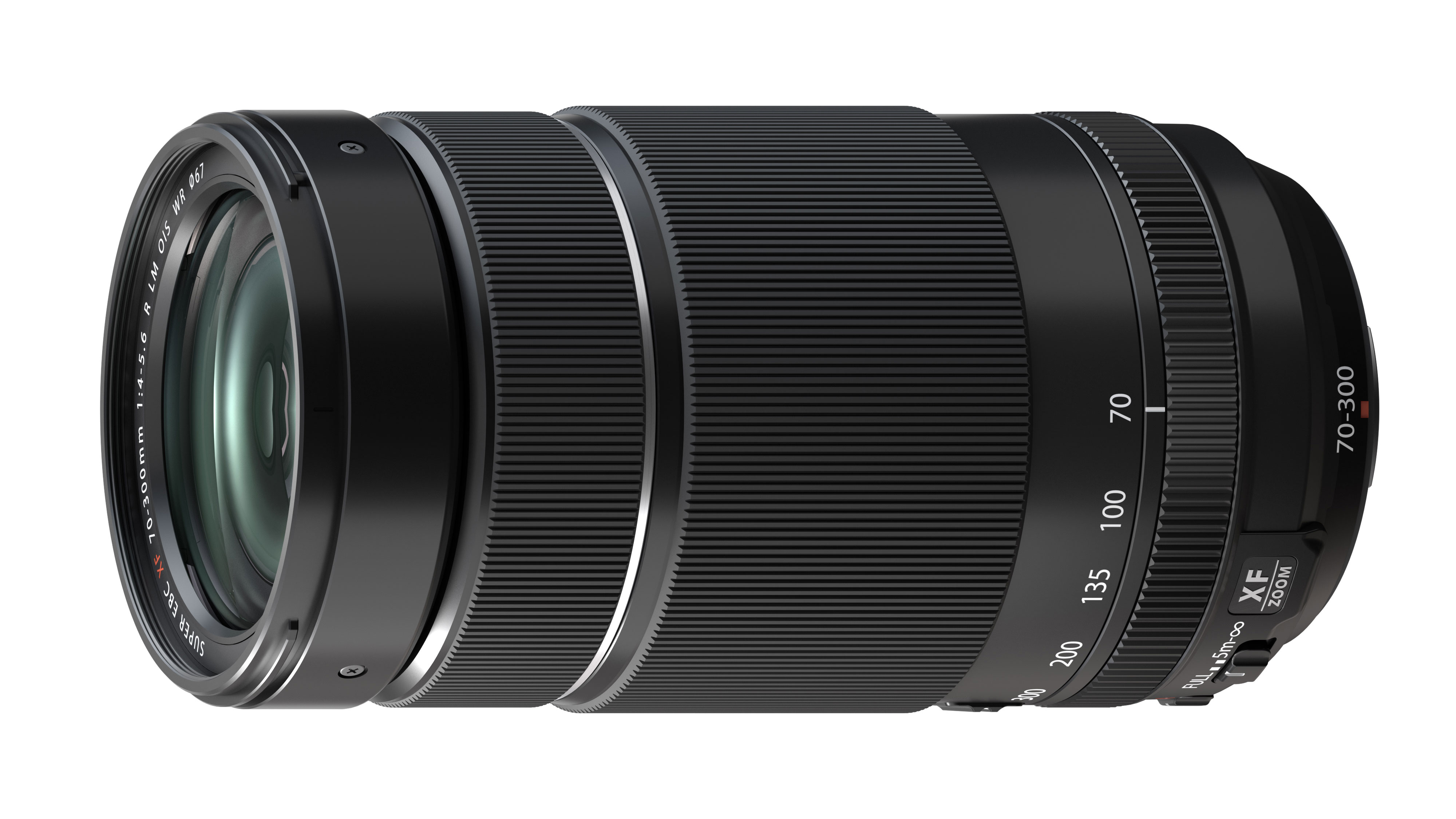
If your budget (and your biceps) can't stretch to the pro-level 70-200mm f/two.8, the Fujinon XF seventy-300mm f4-5.6 R LM OIS WR will give both an easier time, and also offers much more achieve for distant subjects like wildlife. While it is an enthusiast lens, this 70-300mm is far from a budget performer. It blends portability with first-class range and superior sharpness. When paired with the uniform XF 2x TC WR teleconverter yous get a 914mm f/11 lens, which provides excellent value.
Read more than: Fujinon XF 70-300mm f4-5.vi R LM OIS WR review (opens in new tab)

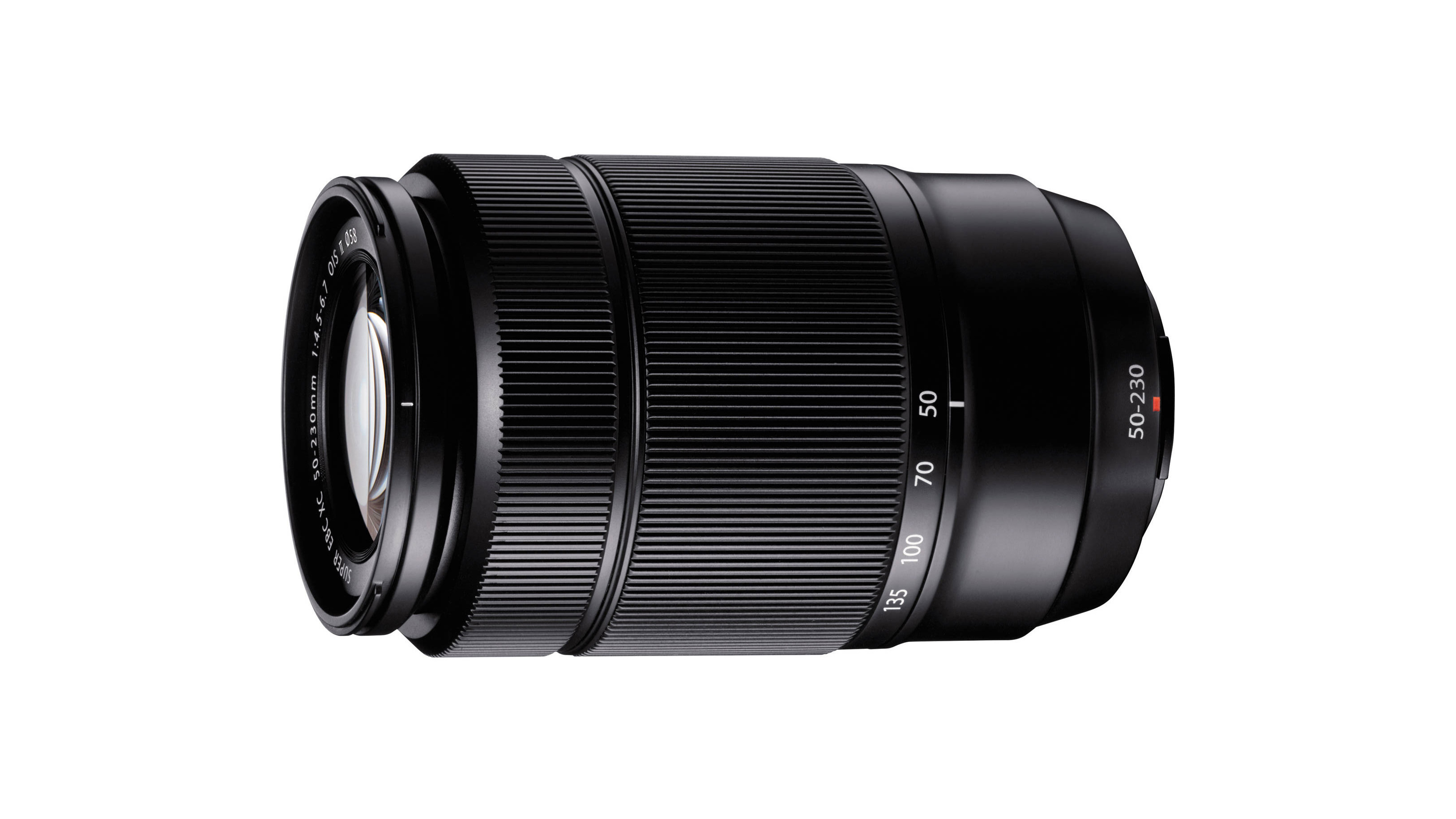
Fujifilm's XC lenses are designed for lightness and low cost, only they still perform remarkably well. Very meaty and lightweight for a telephoto zoom, the Fujifilm XC50-230mm f/4.v-6.7 OIS II keeps things uncomplicated and affordable. Fifty-fifty so, it features an aspherical chemical element and an ED element, and boasts an 'effective' zoom range of 75-345mm. A 3.5-stop optical stabilizer is likewise on paw to fend off camera-shake. Sharpness is decent beyond the frame, with minimal distortion or aberration, and the lens is synthetic to a pleasing standard. This 'Ii' version is a pretty minimal upgrade over its predecessor.


The Fujifilm XF100-400mm f/four.5-5.half-dozen R LM OIS WR has all the usual pro-grade attractions and atmospheric condition-sealed build quality. It's typically heavy for a super-telephoto zoom (opens in new tab), although many on the market are essentially heavier, weighing up to twice as much. Highlights include twin linear motors for super-fast and virtually silent autofocus, a class-leading 5-stop image stabilizer, and pinnacle quality eyes that include five ED elements and one Super ED element. The lens comes complete with a tripod mounting band and an Arca-Swiss compatible tripod plate is also bachelor as an optional actress. And if 600mm of 'constructive' telephoto reach isn't enough for you, the lens is also uniform with Fujifilm's 1.4x and 2.0x teleconverters, which boost the maximum focal length to 853mm and 1,219mm in total-frame terms.
Wide-angle zooms
A broad angle zoom lens is the perfect companion or photographers that enjoy a spot of travel, architectural, interior or mural photography. Luckily, Fujifilm has two not bad options – ane with an ultra–broad focal length range and a second one that'southward a trivial more affordable.
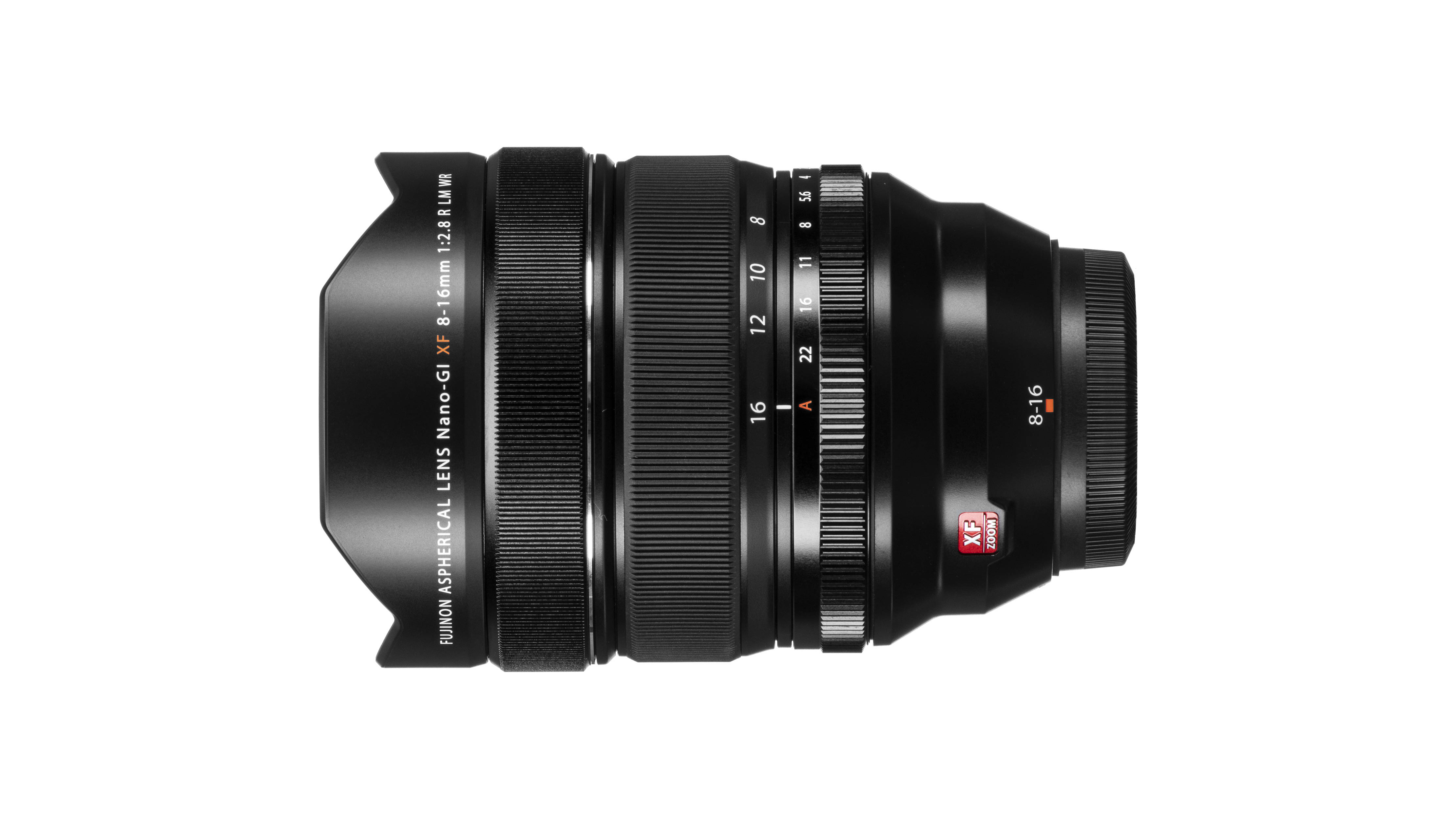
In 2022, Fujifilm debuted its widest lens nonetheless, the Fujifilm viii-16mm f2.8 XF R LM WR Fujinon Lens. Its size and price tag put it firmly in the same camp as the pro optics; weighing more than than 800g, when it's paired with one of the larger cameras like the 10-T3, this lens makes for a setup that calls the mirrorless reputation for lightness into question. Don't get us wrong though, this is a fantastic lens. A sophisticated optical construction ensures pin-sharp image quality, while it also has an actress f-terminate over its nearest comparison point in the X stable, the 10-24mm (see below). It'southward worth existence aware that the lens lacks optical prototype stabilisation of any kind, and its wide front makes it incompatible with screw-in filters. Nevertheless, this is every bit wide as ultra-wide zooms become, with a full frame equivalent focal length of just 12mm at its widest setting!
Read more: Fujinon XF viii-16mm f/two.8 R LM WR review (opens in new tab)

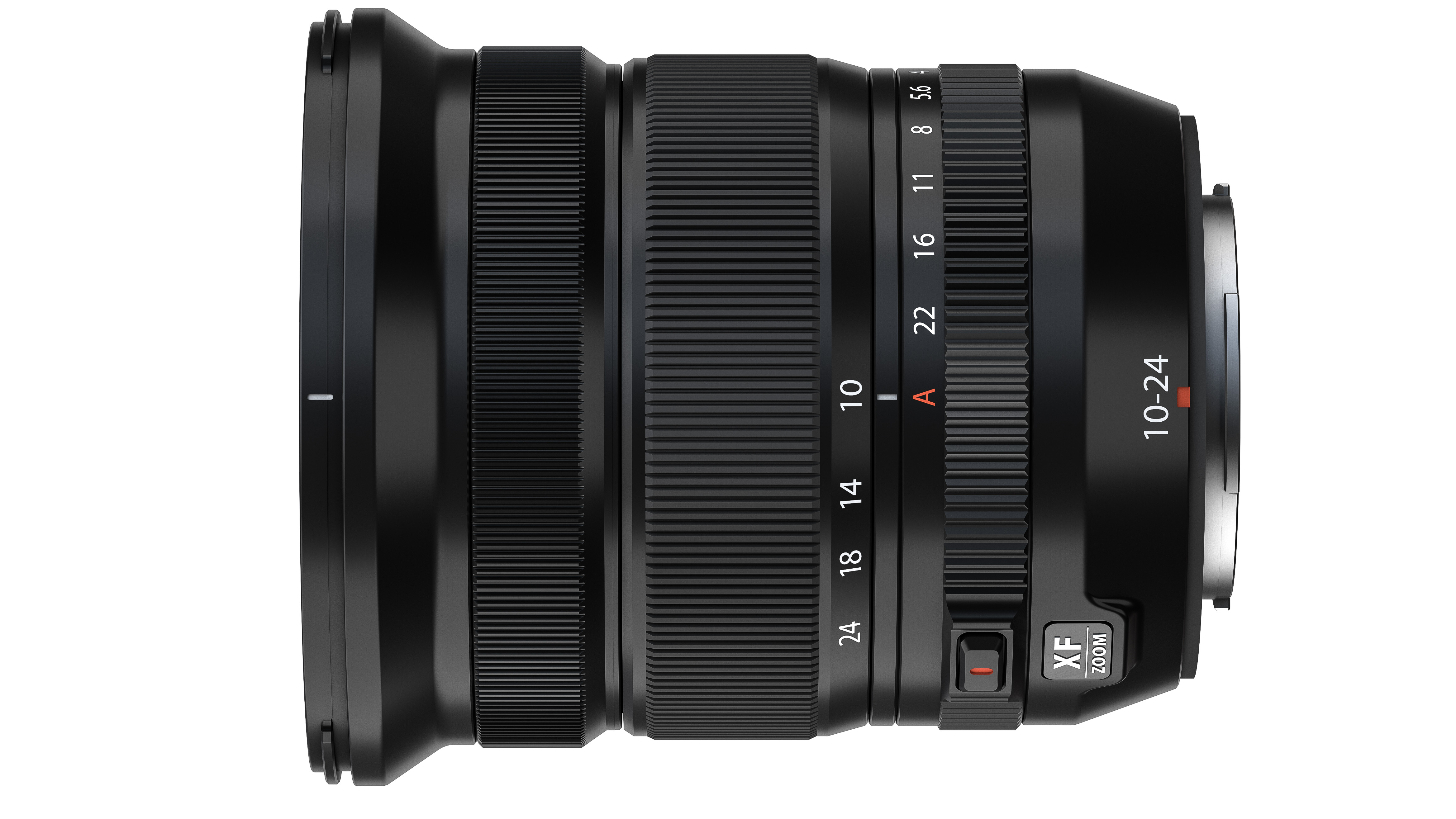
This is a new and improved version of Fujifilm's long-running ultra-wide zoom with a sleeker profile, weatherproofing and improved stabilisation, but with the same optical formulation. The Fujinon XF ten-24mm F4 R OIS WR is certainly a dainty lens to apply. The build quality, finish and handling are absolutely top-drawer, the abiding f/4 maximum aperture is handy for photographers and videographers who similar to piece of work with fixed apertures regardless of zoom setting, and the aperture ring is wonderful to have. If only the optical functioning hit the same standard. It's great at 10mm, but the softer edges at 24mm are a disappointment, and take the edge off (literally) what could take been a 5-star lens.
Read more: Fujinon XF 10-24mm F4 R OIS WR review (opens in new tab)
Wide/standard primes
Who doesn't dear a good prime number lens? Typically featuring wide maximum apertures that are perfect for letting in enough of light and giving a pleasing bokeh-filled event, prime lenses are a firm favorite amongst photographers. We've rounded upwards the best wide and standard primes available for Fujifilm cameras here.
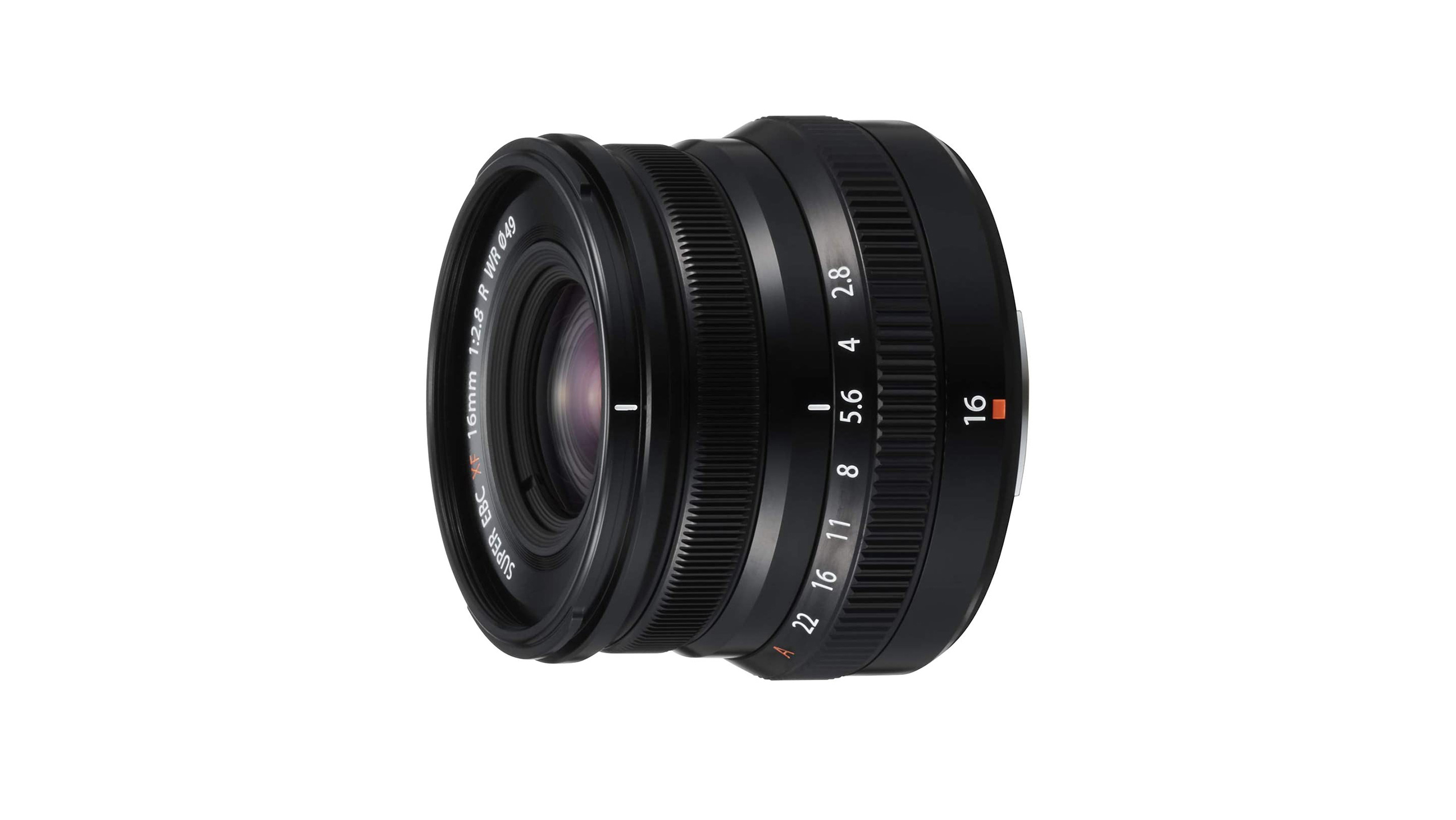
Fujifilm makes ii sets of prime number lenses – it's bigger, faster f/1.four primes and a series of much smaller and more modestly priced f/2 lenses – or f/ii.8 in this case. This lens plays to all the Ten-series' strengths, producing images of excellent quality in a tiny package, and finishing it off with a fashionable build. For the cost, its results are reliably solid, with decent border-to-edge sharpness at all aperture settings. That friendly price does necessitate a few omissions: there's no stabilisation, though you likely won't miss information technology besides much on a lens of this type. More than disappointing is that Fujifilm skips the fluorine blanket for outer elements, a layer of protection against oil and dust that tends to be present on all other X-series lens. Information technology might be worth pairing this one with a UV filter if you're planning on taking it on outdoor adventures.

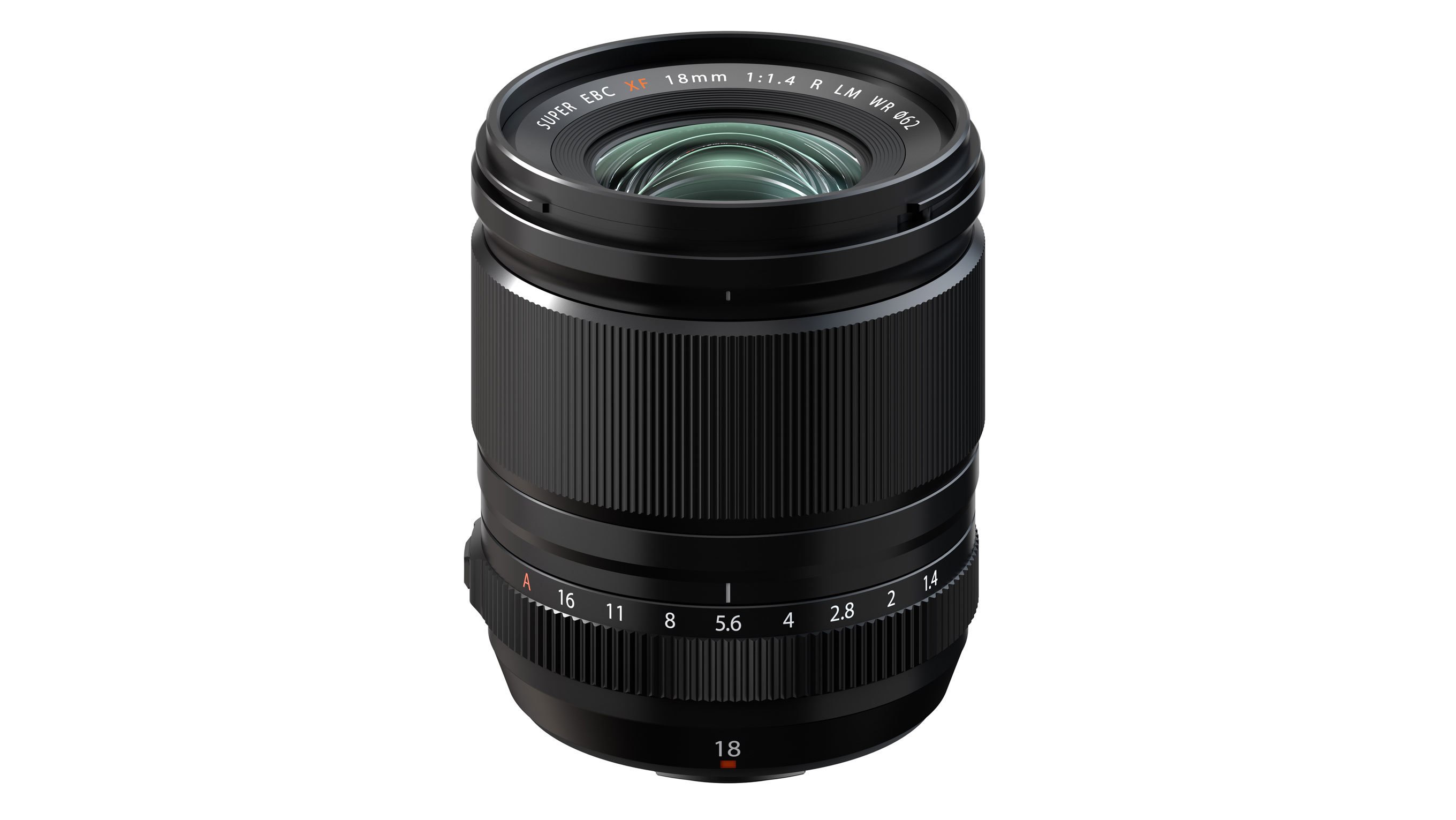
This is a pretty compact and lightweight lens for a wide-angle f/1.4, and boasts a really neat design and an everyday 62mm filter mount. The optical performance is stellar, even broad open, though there is already a 16mm f/1.iv in the Fujinon lens range, so it feels as if this lens is squeezing into a gap that isn't quite there. There's no image stabilization, which we wouldn't expect in a fast prime anyhow, only there is an annoying 'clonking' sound from what nosotros think is the AF actuator when the lens is removed from the camera and its AF organisation is not being powered.
Read more: Fujinon XF18mmF1.4 R LM WR review (opens in new tab)


The Fujinon XF33mmF1.4 R LM WR expands Fujinon's sub-range of fast f/one.4 primes. Its 33mm focal length may seem a picayune unusual, only as Fujifilm's X-mount cameras have APS-C sensors, the XF33mm F1.4 actually has an effective focal length of 50mm, in total-frame terms. For an APS-C 50mm-equivalent lens, this one is comparatively large – simply that's a small price to pay for fast linear motor autofocus, an f/1.iv maximum discontinuity and superb optical performance. The Fujinon XF33mmF1.4 R LM WR also has a concrete aperture ring, working perfectly with the external shutter speed dials on cameras like the X-T30 Ii, X-Pro3 and X-T4 to provide archetype external exposure controls for more avant-garde photographers and those who just like to shoot the old style!

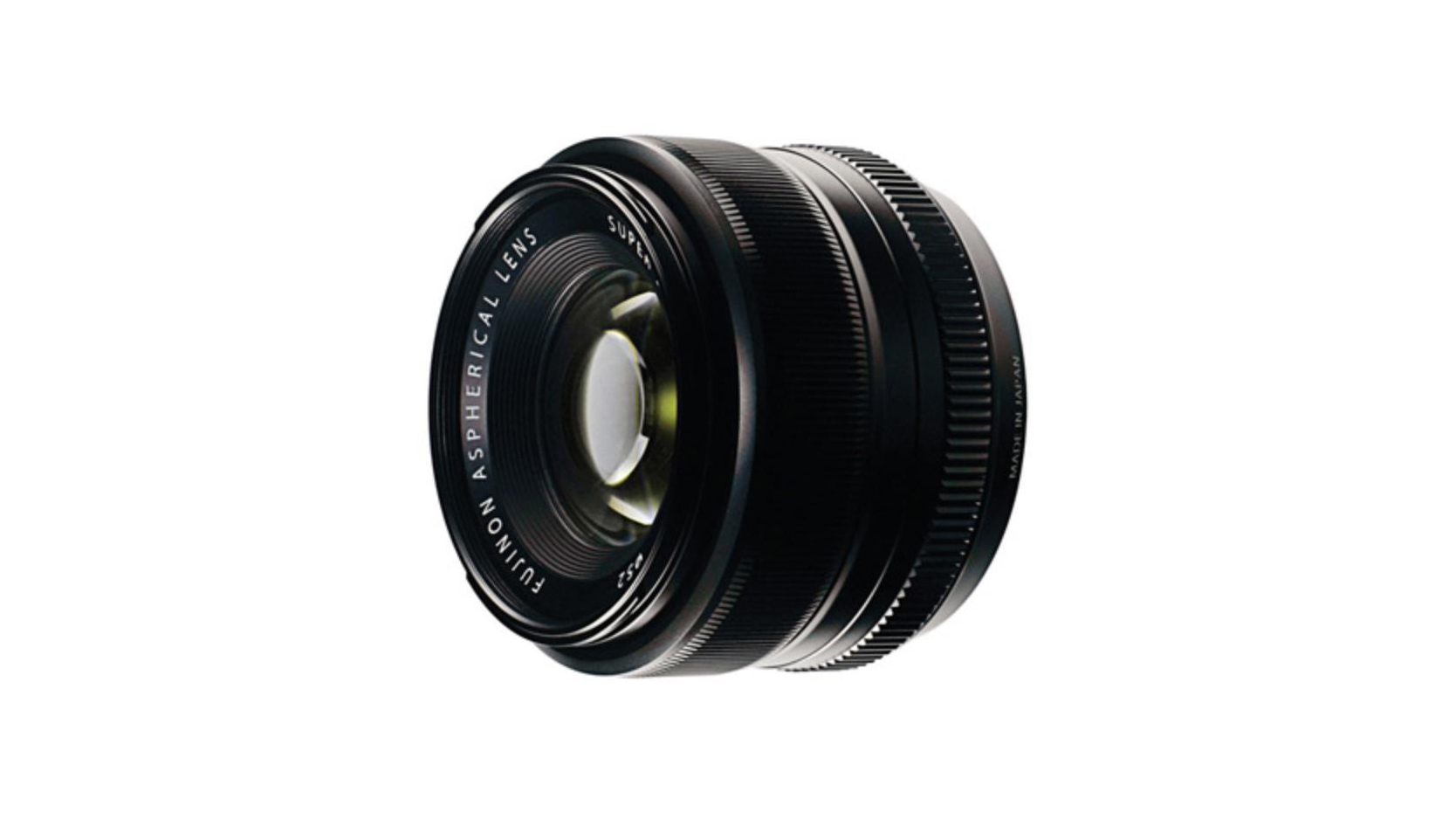
One of the biggest attractions of APS-C format cameras is that they boost the 'effective' focal length of lenses, giving you longer telephoto reach for any given size of lens. The flipside is that it'due south more hard to get a tight depth of field (opens in new tab) when y'all want to blur the background, for example in portraiture or nevertheless-life photography. With a similar viewing angle and perspective to using a standard 50mm prime number on a full-frame camera, the extra-wide aperture rating of f/1.four comes to your help in the Fujifilm XF35mm f/i.iv R (opens in new tab) , enabling a tighter depth of field as well as boosting shutter speeds under dull lighting weather. Contrast and sharpness are first-class and, equally important, bokeh (the quality of defocused areas within images) is pleasantly smooth.

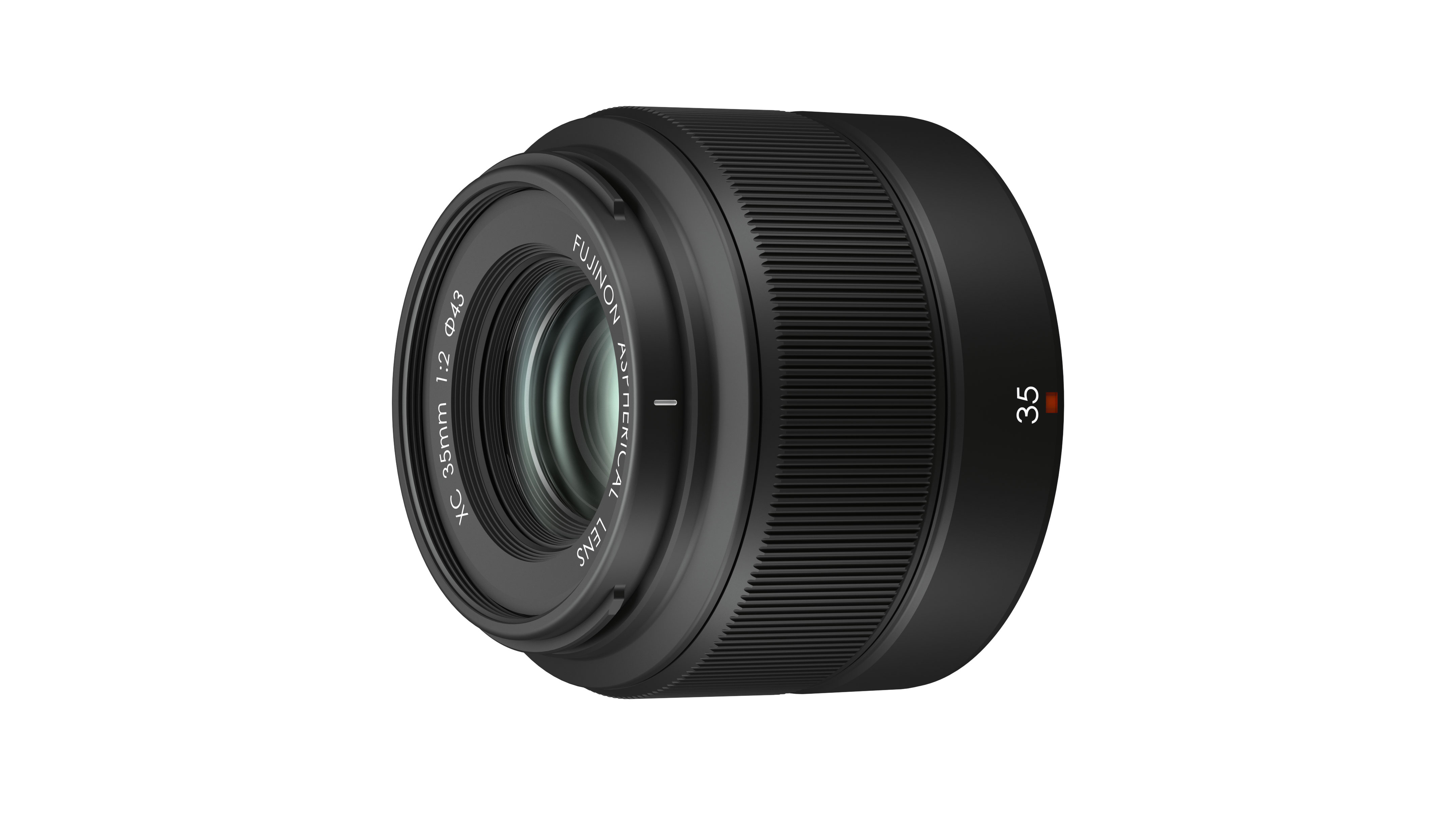
This is another Fujifilm 35mm prime number lens (50mm equivalent) but right at the contrary end of the scale to the XF35mm f/1.4 R above. The XC35mm F2 is really a cut-toll version of Fujifilm's XF35mm F2, without the metallic barrel and mounting plate, atmospheric condition sealing and discontinuity ring. What yous exercise get, though, is the aforementioned optical construction (and optical performance) in a lens that's far lighter and far cheaper. Fujifilm has designed this as a low-cost lightweight companion to its cheaper X-A7 and Ten-T200 cameras, and while information technology does feel quite plasticky compared to Fujifilm'due south XF lenses, its performance and its value for money are pretty exceptional.
Read more: Easily on: Fujinon XC35mm F2 review (opens in new tab)


We're large fans of the original Fujinon XF27mm lens, which was extremely slim and all the same delivered extremely good border to edge sharpness. This new one meets the aforementioned high standards simply adds weather proofing and, fifty-fifty better, a concrete discontinuity ring. It's a great lens in its own correct and fifty-fifty better equally a kit lens for the X-E4. Fujifilm's hope of a fast and silent AF motor didn't seem borne out by our lens, though, which was quick enough only noisy by modern standards. Never mind that, though, because if you're looking for a lens that's small plenty to become in your pocket and precipitous enough to blow y'all away, then this is information technology!
Read more: Fujinon XF27mmF2.8 R WR review (opens in new tab)
Portrait lenses
The contempo Fujinon XF 50mm f/ane.0 R WR (opens in new tab) is a fantastic hyper-fast prime lens that's perfect for portraiture – but it has a hefty cost tag attached! With affordability in mind, here are two Fujifilm portrait lenses that will requite you lot swell quality portraiture without breaking the banking company.
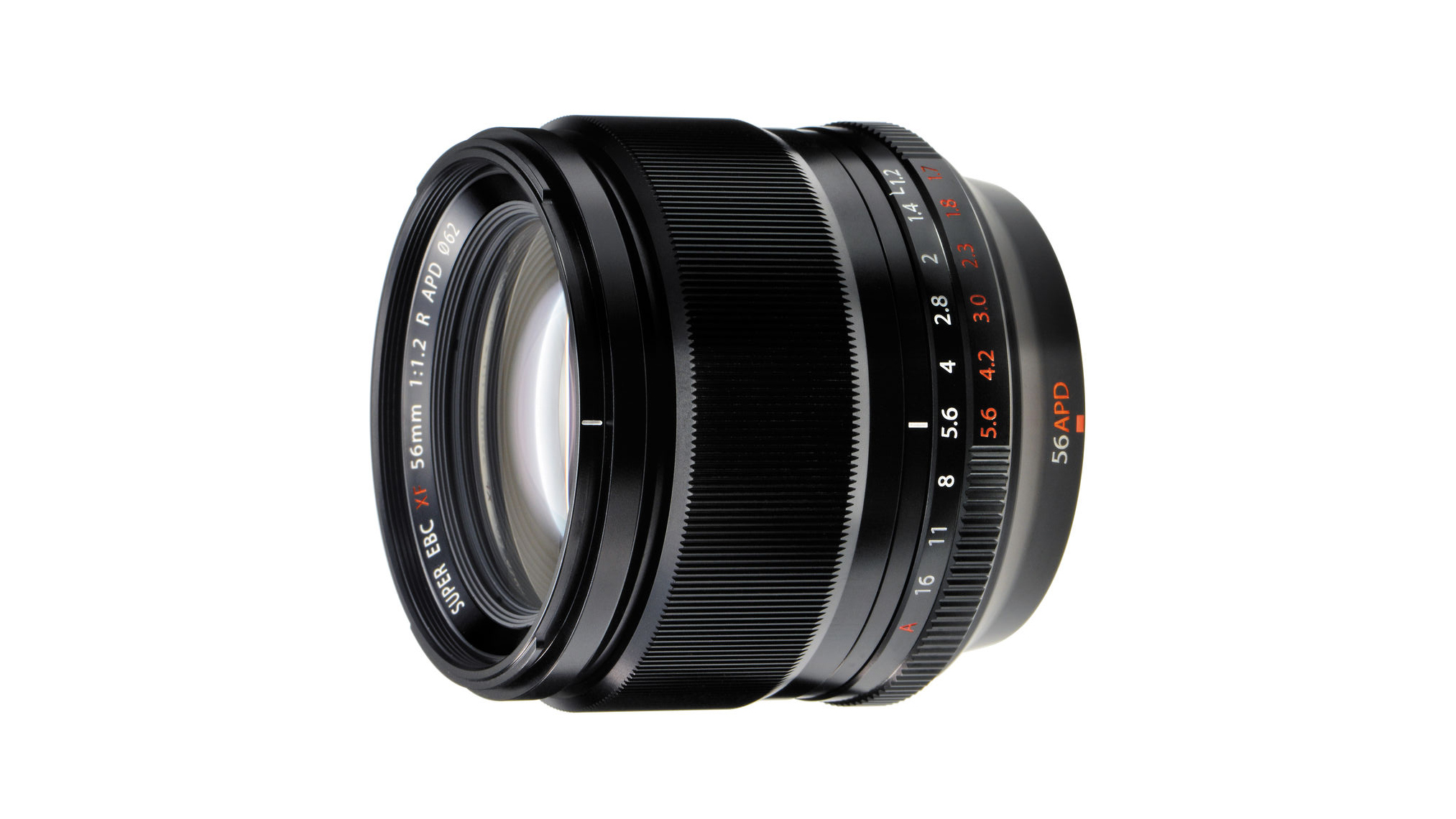
The focal length and aperture rating of this lens is equivalent to using an 85mm f/1.two lens on a full-frame camera. It's an ideal combination for portraiture, enabling y'all to maintain a natural shooting distance from your field of study, while besides blurring the background with a tight depth of field. Nevertheless, the depth of field isn't every bit tight as when using a lens with an 'actual' rather than 'effective' 85mm focal length. This lens fights back with a nanotechnology-engineered 'apodization' filter. This special element in the lens'southward optical path smooths the outlines of shapes in defocused areas, making the bokeh wait more than soft and flossy. However, you have to pay a hefty price for the added allure, every bit the not-APD version of the lens only costs about 2-thirds as much.


This lens won't give you such a tight depth of field as either edition of Fujifilm'south 56mm f/1.2 lens, but it's relatively inexpensive lens and is the next best affair for portraiture. If budget is your major effect, you'll detect this lens to exist more than capable for your portrait needs; f/2 isn't the widest discontinuity, but will notwithstanding produce swell bokeh for memorable images. The all-metal design helps the lens feel premium (arguably more than premium than it actually is) and the full-frame equivalent focal length is most 76mm. The lack of optical paradigm stabilisation is a shame, and this combined with the slightly narrower aperture may hateful you lot're using college ISOs to become the shots you lot want.
Macro lenses
At that place might just exist one macro lens to choose from, but why complicate a good thing? Fujifilm's dedicated macro lens features 1.0x magnification, ensuring total-size reproduction. Find more below…
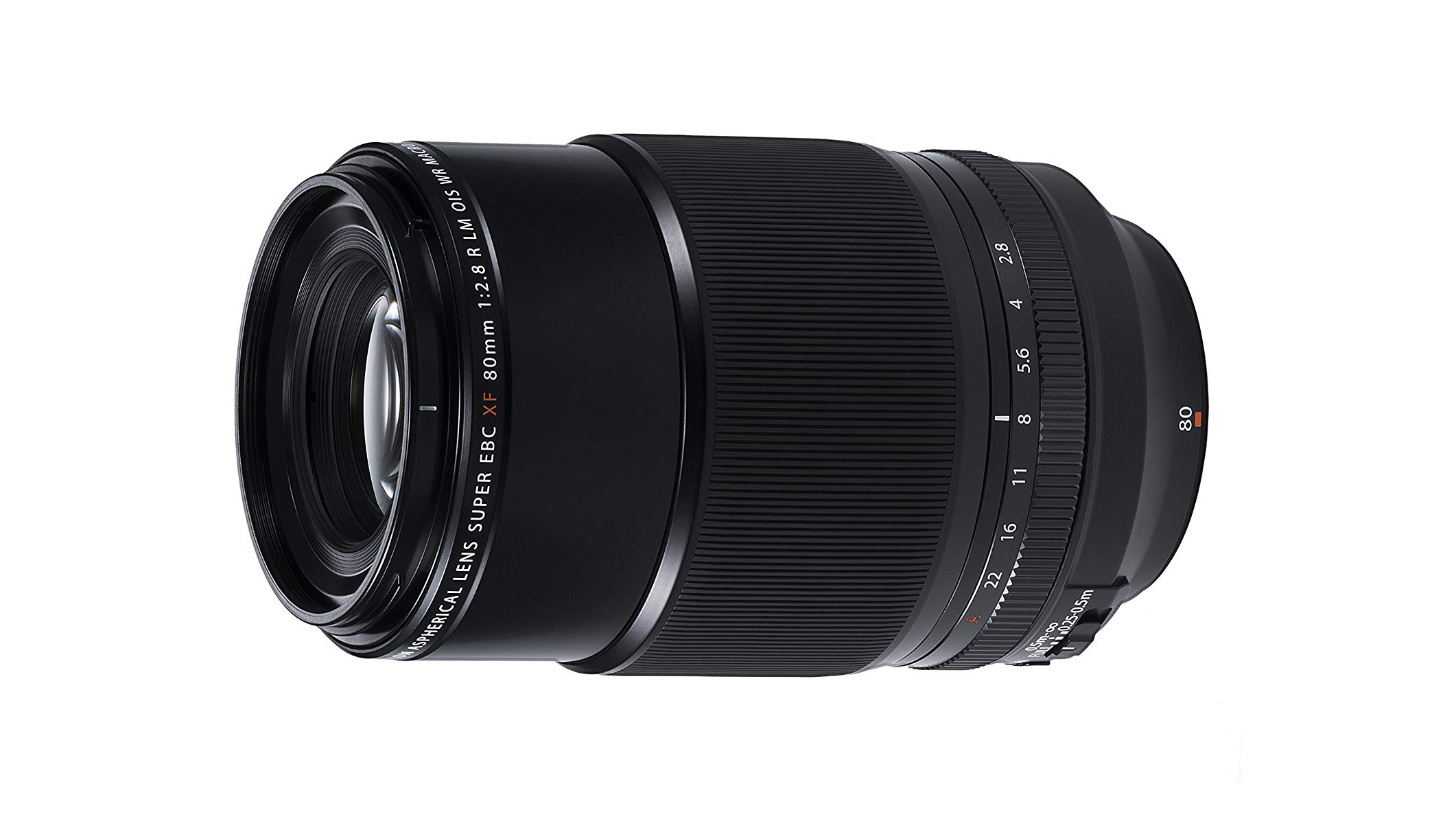
This 'full macro' lens delivers i.0x magnification when shooting at its closest focus distance of 0.25m. Information technology therefore reproduces modest objects at total life size on the photographic camera'due south paradigm sensor, and gives even greater 'effective' magnification than when using a like lens on a full-frame photographic camera, thanks to the APS-C format ingather cistron. The ability to massively enlarge tiny objects and very fine detail is immense. Innovative features include a newly developed autofocus system that utilizes ceramic assurance on a guide rail to ensure the greatest possible accuracy and fidelity across the entire image frame. There's as well a 'hybrid' 5-stop stabilizer that corrects for horizontal and vertical shift equally well every bit the usual camera vibration or 'wobble'. This makes it much more constructive during close-up shooting, although you'll want to ensure you're using a good tripod (opens in new tab) at or near the shortest focus distance.
Fujifilm lens jargon explained
There are two primary classifications of Fujinon lenses: Xc and XF. Both of these are designed for the APS-C Fujifilm X-mount (check out our separate guide to the best Fujifilm GF lenses (opens in new tab) for Fujifilm'due south selection of medium format glass).
If you lot're on a budget, then y'all'll likely be looking at the XC range of lenses. Designed to be meaty and portable, Xc glass is generally more affordable than XF options. If you accept an entry-level Fujifilm camera, such every bit the Fujifilm Ten-A7 (opens in new tab) and Fujifilm X-T200 (opens in new tab), then 90 lenses should be perfect for you.
Meanwhile, XF lenses are designed to deliver fantastic image quality and a top functioning. Featuring a more robust construction (usually with metal barrels and mounting plates), XF lenses are typically a little more expensive than their XC counterparts.
For those photographers looking for the very best in optical quality, there are 3 'Red Badge' XF zoom lenses. These are designed to stand for the best Fujifilm lenses in the X-mount line-up.
You may have besides noticed that virtually Fujifilm lenses feature a string of messages later on their name. If the lens has the letter 'R', then this means that it has a transmission aperture band, giving the user quick aperture control in manual and discontinuity-priority shooting modes. Meanwhile, other lettering tin can include 'WR' (Conditions-Resistant), 'OIS' (Optical Paradigm Stabilization) and 'LM' (Linear Motor).
Read more
• These are the all-time mirrorless cameras (opens in new tab) you can get right now
• We cull the best Fujifilm cameras (opens in new tab)
• Looking to turn pro? Nosotros cheque out the best cameras for professionals (opens in new tab)
Related articles
Can You Put A Filter On Fuji Xf Lenses,
Source: https://www.digitalcameraworld.com/buying-guides/best-fujifilm-lenses
Posted by: mccoyleir1945.blogspot.com


0 Response to "Can You Put A Filter On Fuji Xf Lenses"
Post a Comment